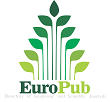Vol. 4 No. 1 (2026)
Published:
2025-12-01
Article
-
 Open Access
Open AccessArticle ID: 468
Review
-
 Open Access
Open AccessArticle ID: 520
 Open Access
Open Access
Article ID: 525
This research quantitatively examines laminar hydrogen combustion under diverse pressure and strain conditions, employing comprehensive chemical kinetics in Cantera 3.0 with the H2–O2 and GRI-Mech 3.0 mechanisms. To learn more about flame speed, structure, and extinction behavior, we looked at four main flame configurations: freely propagating premixed, counterflow diffusion, premixed counterflow, and stagnation-point flames. The laminar flame speed of pure hydrogen was 310 cm/s, which means it burned very quickly because it spread out quickly. Hydrogen stayed stable up to a strain rate of 6.0 × 105 s–1 before it went out. The peak flame temperature dropped from 3600 K to 3000 K when the pressure rose from 1 bar to 100 bar. This shows that higher pressure makes things more stable but less heat is released. The innovation of this study resides in the integration of all principal flame configurations into a cohesive modeling framework, demonstrating that strain rate exerts a more significant impact on flame collapse than pressure. These results give us a baseline for designing efficient turbines, rocket combustors, and industrial heating systems that run on hydrogen.
 Open Access
Open Access
Article ID: 468
The number of photovoltaic installations at residential level has risen to a marked extent; this has led to the development of microgrids powered mainly by photovoltaic. Motivated by these technologies, particularly with smart grids and IoT-enabled devices, this paper explores the first main stochastic control method—the dynamic programming principle—for enhancing flexibility from the demand side. This is brought about by adjusting the demand for electricity to better match generation from solar energy over the course of each hour, day or longer timeframe. The proposed method is applied to household appliances which exhibit spontaneous cycling, called thermostatically controlled loads, and can manage uncertainty related to weather by employing the technique of shaping filter for modeling ambient temperature as diffusion processes. A stochastic control problem has henceforth been established, and we have come through with a quite novel flexibility Markov model. Accordingly, in theory, the Hamilton–Jacobi–Bellman equation provides the only closed-form exact solutions. Even if the existence of solutions to Bellman’s equation is assured, it is often difficult to compute or characterize optimal controls from Bellman’s equation. Our substantial contribution in this work consists of a systematic method for approximating the exact solutions, inspired from the Taylor-Young formula of second-order in the continuous component of the state. Some of our computational experiences are provided in the context of behind-the-meter solar power with simulated scenarios: step function-like random functions and periodic functions. Monte-Carlo method is employed to study the impact of stochastic versus open-loop control. We believe that the comparative study reveals the breadth of flexibility control, namely, to convert the social benefit of mitigating the consequences of renewables uncertainty to a private benefit for users.
 Open Access
Open Access
Article ID: 520
The paper is focused on the relevant risk and uncertainty evaluation of Slovak nuclear power policy. There are considerations about cost estimations for decommissioning and radioactive waste management in Slovakia. Results were incorporated into the actualization of Slovak national policy and program for spent nuclear fuel and radioactive waste management, which was sent for acceptance to the Government of Slovak Republic for the next 6 years period. The most significant risks in Slovakia are connected to build of deep geological repository, and too much consider new projects, which will probably influent human resources in decommissioning. Nevertheless, the nuclear optimism declared in political support of Slovak government should be balanced via real investment to improvement of nuclear infrastructure in Slovakia/Europe/world-wide including substantial investment in nuclear knowledge and human resources. The paper can be inspirative also for other countries with developed nuclear program as Slovak lessons learned.

The University of Edinburgh, United Kingdom

Beijing University of Chemical Technology, China
![]()

.jpg)
.jpg)
2972-4910 (O)
Quarterly